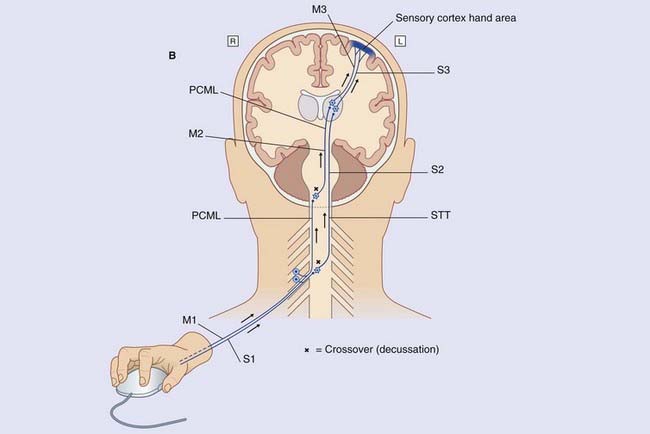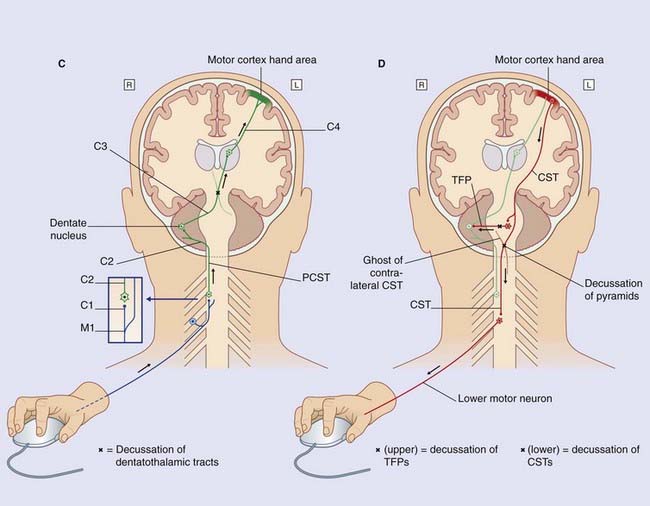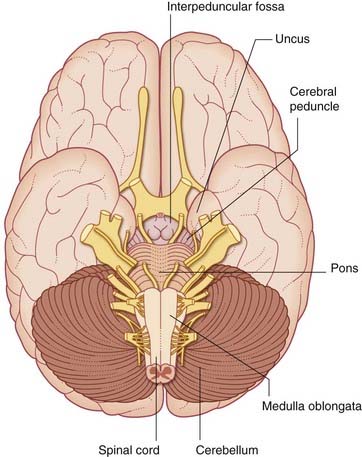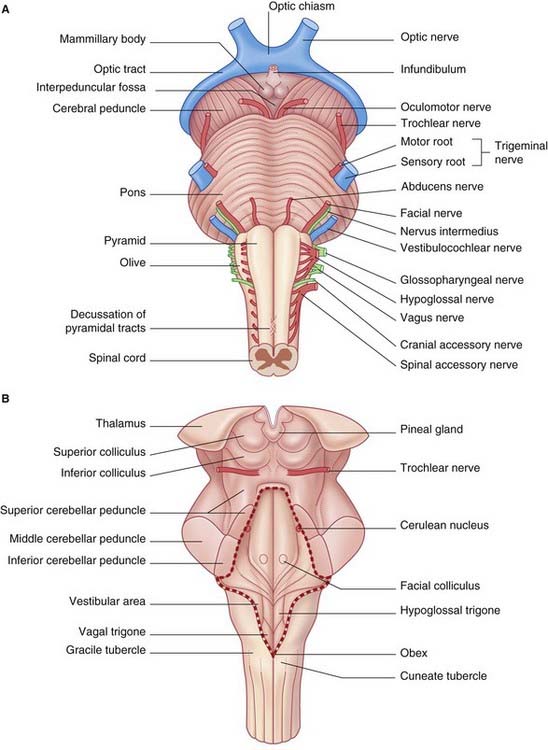3 Midbrain, hindbrain, spinal cord
Box 3.1 Four decussations

The most significant deep tissue sensory organs are neuromuscular spindles (muscle spindles) contained within skeletal muscles. The primary afferents supplying the muscle spindles of the intrinsic muscles of the hand belong to large unipolar neurons whose axons (labeled M1) ascend ipsilaterally (on the same side of the spinal cord) within the posterior funiculus, as already seen in Figure 3.5. They synapse in the nucleus cuneatus in the medulla oblongata. The multipolar second-order neurons send their axons across the midline in the sensory decussation (seen in Figure 3.6).The axons ascend (M2) through pons and midbrain before synapsing on third-order neurons (M3) projecting from thalamus to sensory cortex.

(D) Motor output. Multipolar neurons in the left motor cortex now fire impulses along the upper motor neurons that constitute the corticospinal tract (CST), which crosses to the opposite side in the motor decussation, as already noted in Figure 3.6. The CST synapses on lower motor neurons projecting from the anterior horn of the spinal gray matter to activate flexor muscles of the index finger and local stabilizing muscles.
The midbrain connects the diencephalon to the hindbrain. As explained in Chapter 1, the hindbrain is made up of the pons, medulla oblongata, and cerebellum. The medulla oblongata joins the spinal cord within the foramen magnum of the skull.
Brainstem
Ventral view (Figures 3.1 and 3.2A)
Pons
At the lower border of the pons are the attachments of the abducens (VI), facial (VII), and vestibulocochlear (VIII) nerves (see Table 3.1).
| Number | Name |
|---|---|
| I | Olfactory, enters the olfactory bulb from the nose |
| II | Optic |
| III | Oculomotor |
| IV | Trochlear |
| V | Trigeminal |
| VI | Abducens |
| VII | Facial |
| VIII | Vestibulocochlear |
| IX | Glossopharyngeal |
| X | Vagus |
| XI | Accessory |
| XII | Hypoglossal |










